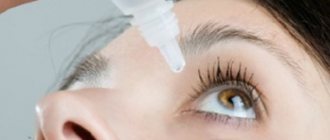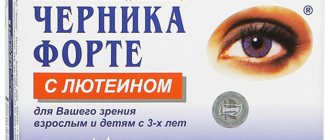Lutein: general information
In nature, xanthophylls are synthesized by green plants from alpha-carotene and are found in plastids. These pigments absorb the violet part of the solar radiation spectrum with a wavelength of less than 460 nm, which is inaccessible to chlorophyll.
Xanthophylls perform protective functions and neutralize free radicals that are formed during photosynthesis.
The lipophilic molecule of lutein is polar, contains a hydroxyl group and has an antioxidant effect. The chemical formula of lutein and its isomer zeaxanthin is C40H56O2.
Modern technologies make it possible to extract lutein directly from plants that synthesize xanthophylls. This pigment is extracted by extraction from the petals of Calendula officinalis (marigold). Marigold extract is a dark orange liquid that is added to alcohol solutions to obtain the desired shade.
What foods contain lutein?
Above we have listed vegetables and fruits that contain lutein and zeaxanthin. In the literal sense of the word, a “bright” representative of a product with a high content of lutein in its composition can be called chicken yolk. It is thanks to lutein that the yolk has such a rich yellow-orange color. The yolk of a large egg contains approximately 0.2 mg of lutein. Studies have shown that Americans and Europeans do not get the required amount of lutein. At the same time, American scientists have found that if you eat one yolk a day for a month, the level of lutein in the human body can increase by 50%.
What other foods contain lutein? There is relatively a lot of it in oatmeal. A glass of oatmeal will contain approximately 0.42 mg of this substance. Some types of nuts contain a lot of lutein. Pistachios lead the list - as much as 2.7 mg per 100 grams.
A lot of lutein is contained in the flowers of marigolds and marigolds. Most often, lutein, which is added as a food coloring to the product, is extracted from these flowers. Sometimes the material is algae and microorganisms.
Lutein supplements are also mainly obtained from marigold flowers. You can enrich your diet by adding 4 inflorescences a day to your food fresh; when crushed, they can be added to salads or main courses. Dried crushed marigold flowers are also used to season food. Tinctures are also made from the inflorescences.
Food Sources of Lutein
In its natural form, E161b dye is found in many products of plant origin that can be eaten, thereby receiving the daily requirement of xanthophylls.
It is generally accepted that the best sources of carotenoids are orange-colored vegetables, fruits and berries, but the maximum concentration of lutein is observed in fresh herbs and spices.
There are no animal sources of lutein, since this substance is synthesized exclusively by plants. An exception to the rule is poultry eggs, the yolk of which contains a yellow-orange pigment.
Chicken yolk contains from 1 mg of xanthophylls (lutein and zeaxanthin) per 100 g of product, so rich orange yolks are considered the most healthy.
The amount of pigment in the yolk varies depending on the breed of bird and the dose of carotenoids consumed in the feed. Edible plant sources of pigment E161b
| The product's name | Lutein content in mcg per 100 g of product |
| Spinach | 12199 |
| Kohlrabi cabbage | 7703 |
| Basil | 5651 |
| Parsley | 5562 |
| Pistachios | 2904 |
| Leek | 1901 |
| Pumpkin | 1501 |
| Broccoli | 1404 |
| Brussels sprouts | 1300 |
| Green onions | 859 |
| Persimmon | 835 |
| Peas | 742 |
| Chilli | 726 |
| Corn | 645 |
| Bell pepper | 343 |
| Celery | 283 |
| Avocado | 270 |
| Carrot | 255 |
| Wheat | 219 |
| Barley | 161 |
| Mandarin | 139 |
| Raspberries | 133 |
| Orange | 128 |
| Tomato | 124 |
| Kiwi | 121 |
| Blackberry | 119 |
| Peach | 90 |
| Apricot | 88 |
| Pumpkin seeds | 75 |
| Plum | 72 |
| Red Ribes | 50 |
What foods contain lutein?
Lutein is mainly found in plant foods, but there are some animal products that are also rich in this substance.
Lutein is a natural dye; it is abundant in brightly colored vegetables and fruits. What foods contain lutein:
- Dark green vegetables (it is believed that they lead in the content of this substance)
- Vegetables and fruits in orange shades
- Vegetables and fruits of rich red color
- yellow egg
- Nuts
The benefits and harms of lutein
Lutein is a naturally occurring substance whose natural sources should be present in a balanced diet.
The human body is not able to produce xanthophylls on its own, so this pigment enters the blood plasma along with food. The main beneficial properties of lutein as a dietary supplement:
- neutralization of free radicals that are formed when direct sunlight hits the retina;
- reducing the risk of cataracts and lens opacities;
- decrease in intraocular pressure;
- increased visual clarity and discrimination ability;
- antioxidant effect and prevention of cellular aging.
In the human body, photosensitive yellow pigment accumulates mainly in the eye tissues and is responsible for visual acuity. The maximum concentration of this substance is observed in the macula of the retina, where lutein plays the role of a light filter.
Natural dye E161b is necessary for complete baby food. During lactation, you need to consume a sufficient amount of foods rich in lutein, since infants obtain this substance from their mother's milk.
This pigment is responsible for the normal development of the retina, the formation of the protective functions of the eye, which prevent the destruction of the lens due to direct sunlight.
In the process of studying the effect of the E161b dye on the human body, no negative properties were found. It is not recommended to abuse products that use E161b for pigmentation, despite its benefits. Consumption of dyes in large quantities can cause irritation of the mucous membranes of the gastrointestinal tract.
Ways to fill the deficit
Let's start with the fact that the human body is not able to produce lutein on its own. Therefore, the diet must contain food sources of the component, otherwise vision will immediately begin to suffer.
A lack of lutein is fraught with the following pathological conditions:
- “night blindness,” in which a person sees poorly at dusk or in poor lighting;
- thinning of the macula (a spot on the retina of the eye necessary for normal focusing of the light beam);
- deformation of the lens.
Doctor's Best, Lutein with OptiLut, 10 mg, 120 Veggie Caps
★★★★☆
1 009 ₽
Buy at a discount
At best, your vision will simply slowly decline. At worst, cataracts or blindness will begin to develop. And without lutein, the heart cannot function normally and the body’s defense against the effects of free radicals deteriorates.
It's good that the average person's diet contains a lot of food with lutein for the eyes. But only if he eats enough vegetables and fruits. There are few animal sources of the substance, but they also exist.
The best sources of carotenoids that are beneficial for eye health are apples, oranges, peaches, bell peppers, etc. The list goes on and on. To avoid mistakes, choose dark green or red fruits. From these, people get the maximum amount of lutein.
An adult’s body should receive at least 5 mg of carotenoid every day.
But for this you need to eat a lot of foods rich in this substance. In the cold season, this is problematic: plant foods are grown in greenhouses, and there are almost no useful substances left in them. And the price is much higher than in summer.
To avoid deficiency, we recommend supporting the body with dietary supplements. Of course, this is irrelevant for residents of the southern regions, where fresh fruits are freely available most of the year (provided that a person eats them regularly).
If you start taking dietary supplements, do not expect instant results. It is necessary for lutein to accumulate in the body, only then will it begin to act on the eyes.
Applications of lutein
In the food industry, the coloring pigment E161b is used to improve the appearance of food and beverages. To do this, luteal extract is diluted with alcohol and other approved solvents.
By varying the concentration of the dye in the solution, you can get all sorts of shades of yellow and orange. E161b solutions may contain various impurities: fats, oils, waxes and other carotenoids. In addition to edible products, E161b dye is present in decorative cosmetics, food additives, medications, fish and poultry feed.
Food products for which food coloring E161b is used for pigmentation:
- ice cream, yoghurts, dairy products with fruit fillings;
- preserves, jams, marmalades, jellies, canned vegetables and fruits
- popcorn, crackers, chips, potato snacks, curly corn products;
- sweet pastries, bakery and pasta;
- flavored processed cheeses, sausages, processed meat products;
- low-alcohol and sparkling drinks, fruit wines, cider.
After xanthophyll deficiency was identified in formula-fed infants, lutein began to be added to infant formula for a balanced infant diet.
Due to the instability of the lutein molecule, the E161b dye is used exclusively for industrial purposes. However, lutein is the most accessible of all carotenoids, so if you can consume it in its natural form, there is no need to take artificial supplements. Natural sources of lutein are recommended to be included in your daily diet for a balanced diet.
Lutein content in green foods
The color of a vegetable or fruit depends on phytochemical compounds that have certain properties.
The highest content of lutein is in dark green vegetables, especially from the cruciferous family. These include various types of kale, spinach, broccoli, turnip tops and even green peas.
It’s not for nothing that spinach has become a kind of symbol of healthy eating: this tasty and extremely healthy vegetable contains a whole complex of vitamins, minerals and other substances we need. Spinach contains 14 mg of lutein per 100 grams, which is more than the daily requirement. By the way, you can read about the daily requirement of lutein in our article. Spinach also contains other pigments from the carotenoid group.
Steamed kale contains 22 milligrams of lutein per serving. Interestingly, many thermally processed vegetables contain more lutein than fresh ones.
No less famous among adherents of proper nutrition, broccoli contains both lutein and zeaxanthin.
The list of foods rich in lutein includes the well-known parsley, 5.7 mg per 100 grams. This is a figure that is as close as possible to the daily requirement for a healthy person. Zucchini is almost two times inferior to parsley in terms of lutein content, but at the same time it is one of the products containing lutein in large quantities. 2 mg per 100 grams is also a lot.
| Lutein in foods: table (green vegetables and fruits per 100 g) | |
| Spinach | 13 mg |
| Parsley | 5.7 mg |
| Zucchini | 2.1 mg |
| Leek | 1.9 mg |
| Broccoli | 1.4 mg |
| Green onion | 0.8 mg |
| Peas | 0.7 mg |
| Asparagus | 0.7 mg |
| Celery | 0.2 mg |
| Basil | 5.7 mg |
| Cilantro | 0.8 mg |
| Avocado | 0.27 mg |
| Kiwi | 0.1 mg |
Medical use
The daily diet of a European resident provides approximately 1-2 mg of E161b pigment per day, while the recommended daily dose of lutein varies from 2 to 10 mg. An increased need for xanthophylls is observed in newborns, with a decrease in visual acuity and age-related changes in the retina.
Lutein deficiency occurs due to poor nutrition, eye diseases and pathologies.
Medicines containing lutein are used to restore vision, prevent and treat ophthalmological diseases. The optimal dosage of the drug is prescribed by an ophthalmologist. Signs of lutein deficiency and medical indications for its use occur with increased visual fatigue, myopia, cardiovascular diseases, hypertension, poor nutrition and a sedentary lifestyle.
E161b deficiency can be easily corrected with foods rich in yellow pigment or dietary supplements. The use of 10 mg of lutein per day as part of medications increases the concentration of this substance in the blood plasma by approximately 5 times, and xanthophylls begin to accumulate in the eye tissues 20 days after the start of taking dietary supplements.
Lutein in cooking
Plant products containing carotenoids are available and included in most home-cooked meals. Ideal sources of lutein include fresh greens, zucchini, green peas and all types of cabbage. During the cold season, you can replenish lutein reserves in the body with carrots, pumpkin, canned corn, sweet peppers, persimmons and citrus fruits. But the best recommended are simple and tasty summer salad recipes for visual health.
To prepare a dietary salad with egg and spinach you will need:
- a bunch of spinach;
- celery greens;
- 2 chicken eggs;
- 30 g grated cheese;
- 2 tbsp. l. olive oil;
- ½ lemon;
- salt pepper;
- croutons made from dried grain bread.
Rinse the spinach and celery under running water, separate from the stems and place in a salad bowl. Then boil the eggs, cut into 4 parts and add to the salad along with croutons. You can season the dish with vegetable oil and lemon juice, add spices and sprinkle with grated cheese.
Another delicious source of lutein is a spicy Brussels sprouts salad with green peas. Ingredients:
- 300 g fresh Brussels sprouts;
- 100 g of carrots and canned peas;
- 1 tsp. caraway;
- parsley;
- 2 tbsp. l. corn or olive oil;
- salt and pepper to taste.
Boil the carrots, peel and cut into slices, cut the heads of cabbage; put chopped vegetables in a salad bowl, add peas and caraway seeds; pour oil over the salad, sprinkle with spices and garnish with parsley.
And finally, we can’t help but mention the recipe for an original kohlrabi salad, which will not only be an excellent source of lutein, but will also delight you with an unusual and pleasant taste.
From the products we will need 1 head of kohlrabi cabbage, daikon, a bunch of cilantro and green onions, 1 chicken egg, 1 tbsp. l. low-fat sour cream or yogurt, salt to taste.
Boil the egg, peel and finely chop; Wash the cabbage and radishes, peel and grate on a coarse grater; mix the ingredients in a salad bowl, add salt, season with sour cream or yogurt and garnish with cilantro.
Best materials of the month
- Coronaviruses: SARS-CoV-2 (COVID-19)
- Antibiotics for the prevention and treatment of COVID-19: how effective are they?
- The most common "office" diseases
- Does vodka kill coronavirus?
- How to stay alive on our roads?
One serving of such green salads completely covers the daily requirement of an adult for lutein and does not harm the figure. Since carotenoids are only absorbed in combination with lipids, they should be consumed with healthy vegetable fats. In order for vitamin dishes to retain maximum benefits, it is not recommended to store vegetables in the refrigerator for more than a day and subject them to heat treatment.
Foods containing lutein and zeaxanthin
Not all food sources of carotenoids are included in the table above. For convenience, we divided them into 3 large categories by color.
Dark green vegetables and fruits
It is these plants that are considered champions in the amount of lutein and zeaxanthin. The more pigment, the richer the color and the more pronounced the beneficial properties of carotenoids. To avoid a lack of lutein, be sure to eat cabbage, spinach, broccoli and peas.
We have included other dark green foods containing lutein in a separate list.
Table 2 - Lutein content in green vegetables and fruits
| Product | Concentration, mg per 100 g |
| Spinach | 11,6 |
| Basil | 5,7 |
| Polka dots | 1,3 |
| Parsley | 5,6 |
| Zucchini | 2 |
| Leek | 1,9 |
| Broccoli | 1,4 |
| Green onions | 0,8 |
| Cilantro | |
| Green asparagus | 0,7 |
| Celery | 0,2 |
| Avocado | |
| Kiwi | 0,1 |
There is only one fruit on the list, but it shouldn’t be discounted. In the autumn, kiwi will provide a boost of not only lutein, but also vitamin C, helping to protect against colds. And in the summer, when a lot of inexpensive vegetables and herbs are sold, make salads more often. Add spinach, basil, green onions, parsley and cilantro to any dish. Your eyes and whole body will say “thank you”!
Red vegetables and fruits
They also contain a lot of useful pigment. The list of foods rich in lutein includes all red berries, grapes, tomatoes, and apples. The more plants with red fruits in the diet, the less the need for luteal dietary supplements.
Table 3 - Lutein content in red vegetables and fruits
| Product | Concentration, mg per 100 g |
| Rose hip | 2 |
| Hot chili pepper | 0,8 |
| Red bell pepper | 0,4 |
| Apples | 0,1 |
| Tomatoes | 0,1 |
| Cherry | 0,1 |
| Currant | 0,05 |
Hot peppers contain more eye-healthy lutein and zeaxanthin than their sweet counterparts. If the health of your stomach and intestines allows, periodically eat spicy dishes with chili.
Berries contain much less lutein (rose hips are an exception), but they are low-calorie and do not harm your figure, so eat more currants, cherries, raspberries and cherries during the season. A summer salad of tomatoes and herbs is an ideal option for replenishing the lack of carotenoids.
Orange vegetables and fruits
Orange foods also contain a lot of lutein for the eyes. They are only slightly inferior in the amount of lutein to dark green vegetables. Be sure to eat citrus fruits, pumpkin, carrots: they are considered one of the best sources of carotenoids.
Table 4 - Lutein content in orange vegetables and fruits
| Product | Concentration, mg per 100 g |
| Pumpkin | 8,2 |
| Peach | 5 |
| Persimmon | 0,8 |
| Carrot | 0,3 |
| Papaya | 0,1 |
| Mango | |
| Apricot |
Pumpkin is a true champion and is recommended to be eaten as often as possible. Autumn is a great time when pumpkins ripen and absorb maximum nutrients. Do not deny yourself the pleasure and make a delicious puree soup. Pumpkin makes it especially tasty.
Fresh carrots don't contain much lutein for the eyes, but there is an easy way to boost the concentration of carotenoids. To do this, the vegetable must be boiled, and it must be eaten not immediately after cooking, but after a few hours. During this time, even more beneficial compounds will appear in carrots, and they will be better absorbed.
Lutein and legislation
Natural dye E161b is included in the global register of approved food additives. Due to the absence of side effects and contraindications for use, marigold extract is used in the EU, CIS countries, USA, Australia and the African continent.
The permissible amount of lutein in combination with other food additives varies from 50 mg to 2 g per 1 kg of different products. In some CIS countries, the absence of negative effects of pigment on the human body has not been documented, therefore the E161b dye is not included in the list of permitted additives and is used unofficially in the food industry.
More fresh and relevant information about health on our Telegram channel. Subscribe: https://t.me/foodandhealthru
We will be grateful if you use the buttons:










